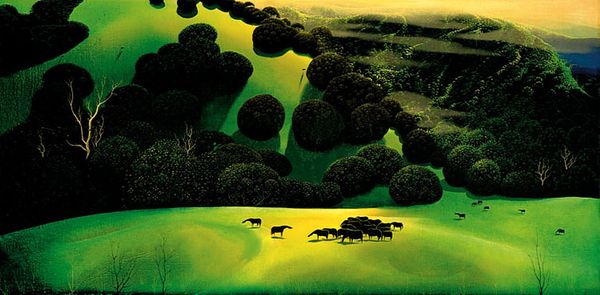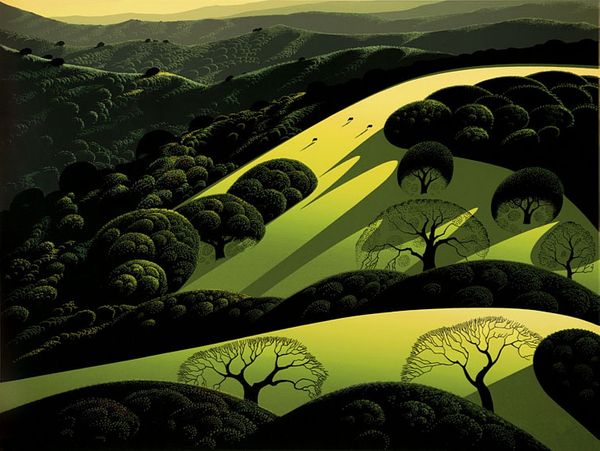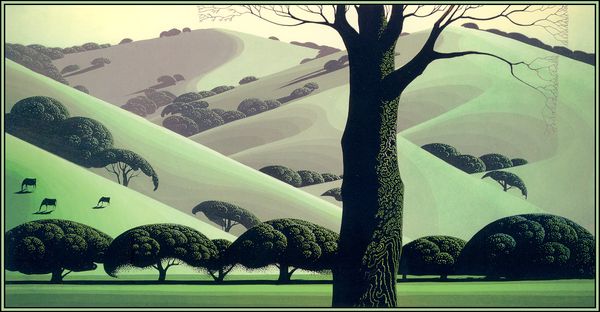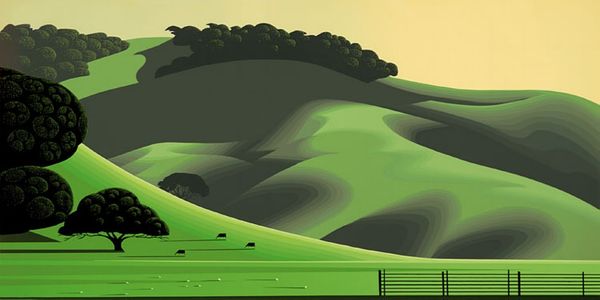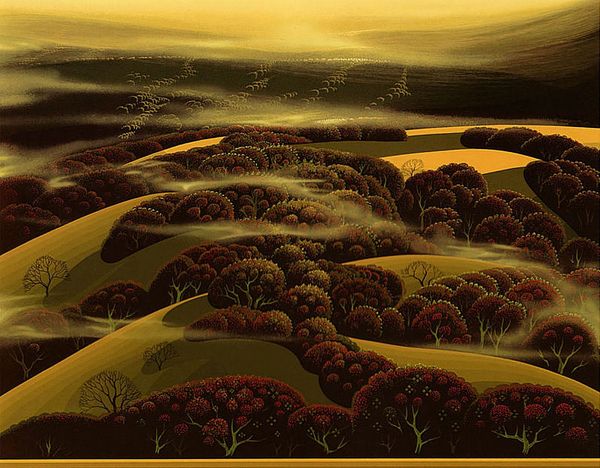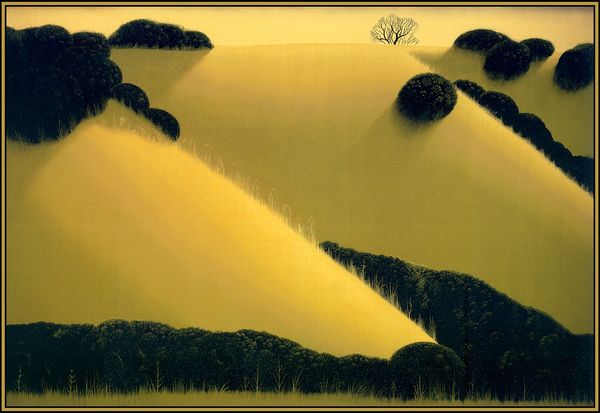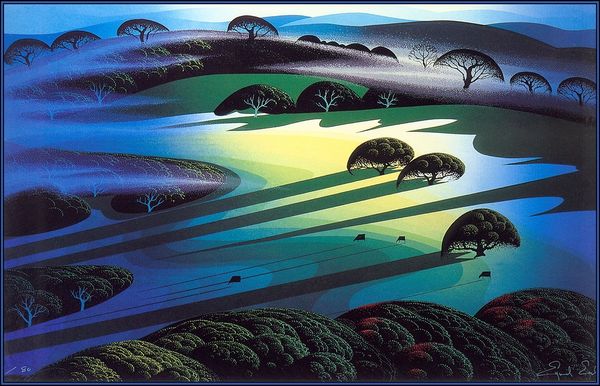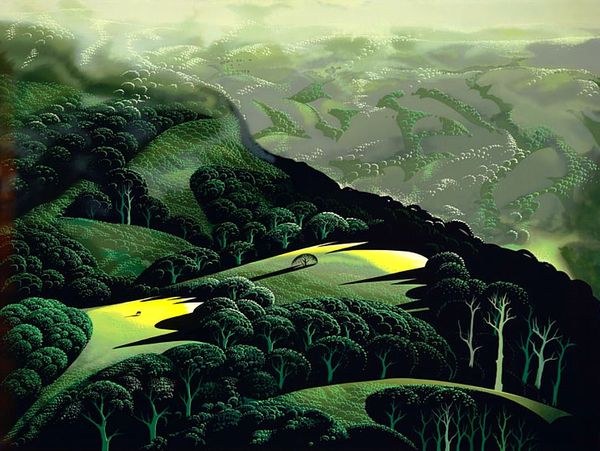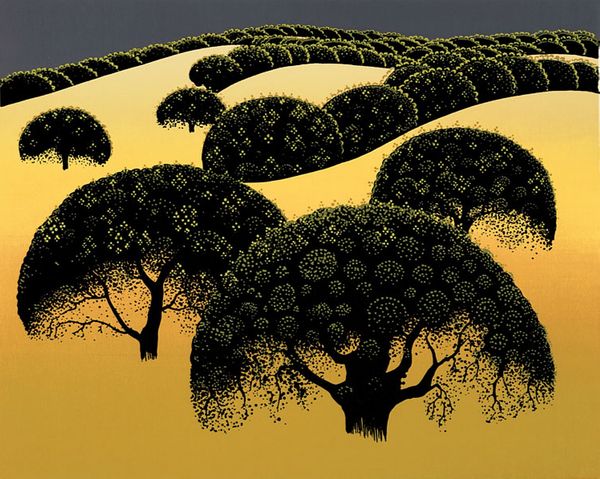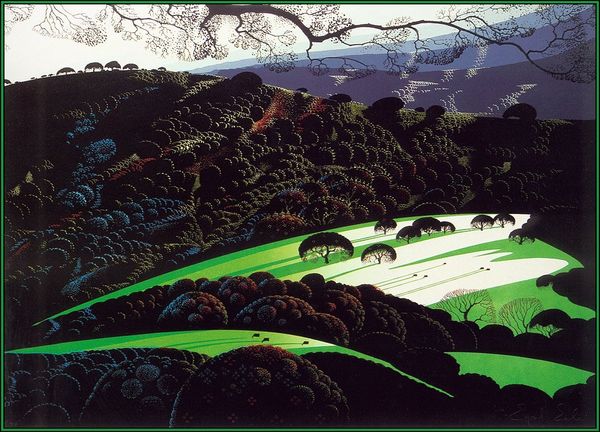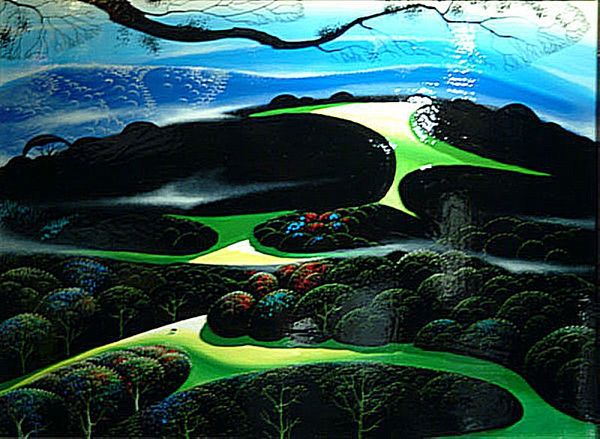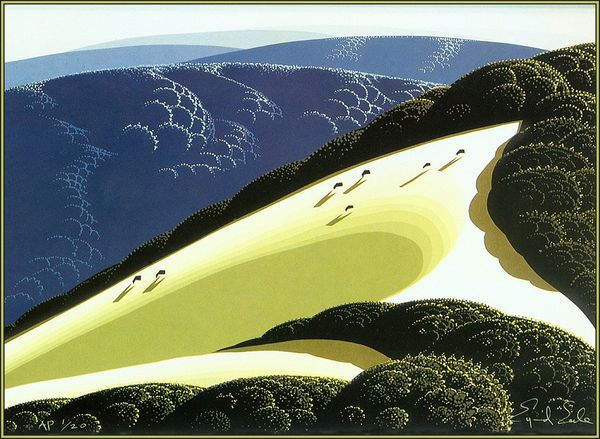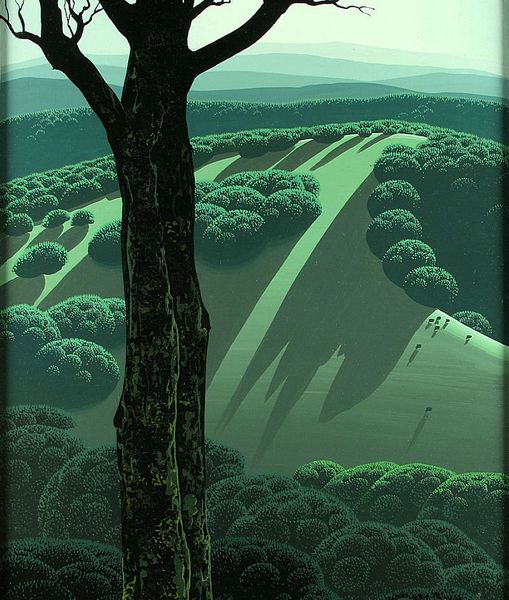
Copyright: Eyvind Earle,Fair Use
Editor: So this is "Cachuma Ranch" painted by Eyvind Earle in 1999, and it looks like a tempera and oil plein-air painting. It has this very serene, almost idealized quality. What do you see in it? Curator: The idealized quality is key, I think. Earle, although working in the late 20th century, harkens back to earlier landscape traditions. Think about the role that landscape painting played in constructing a national identity. This image, with its rolling hills and carefully placed trees, projects an idea of California as an untouched, pastoral Eden. Editor: So it's not really about realism at all? Curator: Realism is a tricky word. The technique, with its precise lines and smooth surfaces, leans toward a kind of hyper-realism. But look closer: Do landscapes actually *look* like this? The carefully spaced trees, the lack of any human presence… It’s less about depicting a specific place and more about selling an idea. An idea of California. Consider who this ideal benefits, and who might be excluded from it. Is it representing California for all Californians, or a select few? Editor: That makes a lot of sense. I hadn't really thought about the power that a landscape can hold. Curator: And it makes us question the role art plays in constructing narratives, both personal and collective. Thinking about its distribution, its accessibility through prints - it perpetuates that constructed vision on a broader public scale. So the idyllic view may be hiding a very calculated reality. Editor: I will definitely look at landscapes differently now! Thanks for sharing these important observations. Curator: My pleasure! It's important to remember the painting not just as an aesthetic experience but also a cultural object embedded in social and political discourse.
Comments
No comments
Be the first to comment and join the conversation on the ultimate creative platform.
